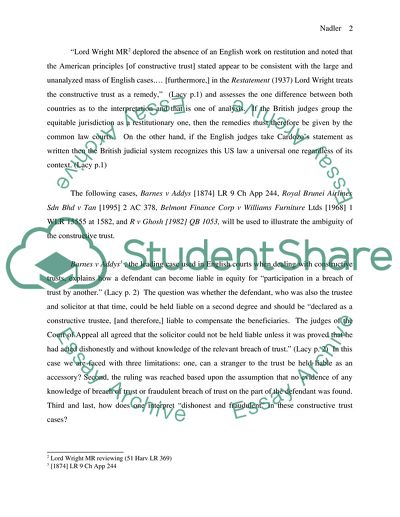Cite this document
(“A constructive trust is the formula through which the conscience of Essay”, n.d.)
A constructive trust is the formula through which the conscience of Essay. Retrieved from https://studentshare.org/miscellaneous/1536069-a-constructive-trust-is-the-formula-through-which-the-conscience-of-equity-finds-its-expression-per-cardozo-j-beatty-v-guggenheim-exploration-co-1919-225
A constructive trust is the formula through which the conscience of Essay. Retrieved from https://studentshare.org/miscellaneous/1536069-a-constructive-trust-is-the-formula-through-which-the-conscience-of-equity-finds-its-expression-per-cardozo-j-beatty-v-guggenheim-exploration-co-1919-225
(A Constructive Trust Is the Formula through Which the Conscience of Essay)
A Constructive Trust Is the Formula through Which the Conscience of Essay. https://studentshare.org/miscellaneous/1536069-a-constructive-trust-is-the-formula-through-which-the-conscience-of-equity-finds-its-expression-per-cardozo-j-beatty-v-guggenheim-exploration-co-1919-225.
A Constructive Trust Is the Formula through Which the Conscience of Essay. https://studentshare.org/miscellaneous/1536069-a-constructive-trust-is-the-formula-through-which-the-conscience-of-equity-finds-its-expression-per-cardozo-j-beatty-v-guggenheim-exploration-co-1919-225.
“A Constructive Trust Is the Formula through Which the Conscience of Essay”, n.d. https://studentshare.org/miscellaneous/1536069-a-constructive-trust-is-the-formula-through-which-the-conscience-of-equity-finds-its-expression-per-cardozo-j-beatty-v-guggenheim-exploration-co-1919-225.


